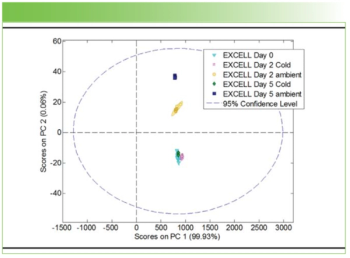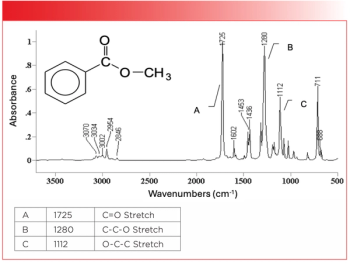
FT-IR Spectroscopy Used to Analyze Collagen in Hydrolyzed Protein
Researchers in Norway used Fourier transform infrared spectroscopy protein composition from poultry.
A team of scientists in Norway are investigating Fourier transform infrared spectroscopy (FT-IR) to predict collagen content in hydrolyzed protein samples.
The research, which was published in the Spectrochimica Acta Part A: Molecular and Biomolecular Spectroscopy, used a dry-film FT-IR approach the scientists were able to reveal characteristic spectral features of collagen and collagen peptides in the spectra, which produced sound qualitative regression models for collagen content measurements (1). The samples were obtained through enzymatic protein hydrolysis of poultry by-products.
“By employing a hierarchical cluster-partial least squares (HC-PLS) calibration model the prediction performance of samples with lower collagen content improved significantly,” the authors wrote in the study. “However, for samples with higher collagen content the prediction performance remained similar to the global PLS approach.”
HC-PLS is a multivariate data analysis technique that combines hierarchical cluster analysis (HCA) with partial least squares (PLS) regression. HC-PLS first groups similar samples using HCA, forming clusters of similar samples. PLS regression is then applied to each cluster individually, and thus enhances predictive modeling performance within each group, yielding lower errors and improved overall model predictive performance.
The researchers used dry film FT-IR and conducted a HC-PLS calibration model, which provided a low prediction error when validated.
The scientists found that their results matched well with previously published FT-IR studies on collagen.
“This is also one of few examples where FT-IR is successfully used to quantify protein composition,” the scientists wrote. “The dry-film FT-IR approach presented in the study is expected to be an important tool in the growing industrial segment that is based on sustainable utilization of collagen-rich biomass.”
Reference
Kristoffersen, K. A.; Måge, I.; Wubshet, S. G.; Böcker, U.; Riiser Dankel, K.; Lislelid, A.; Rønningen, M. A.; Afseth, N. K. FTIR-Based Prediction of Collagen Content in Hydrolyzed Protein Samples. Spectrochimica Acta Part A: Molecular and Biomolecular Spectroscopy 2023, 301, 122919. DOI:10.1016/j.saa.2023.122919.
Newsletter
Get essential updates on the latest spectroscopy technologies, regulatory standards, and best practices—subscribe today to Spectroscopy.





